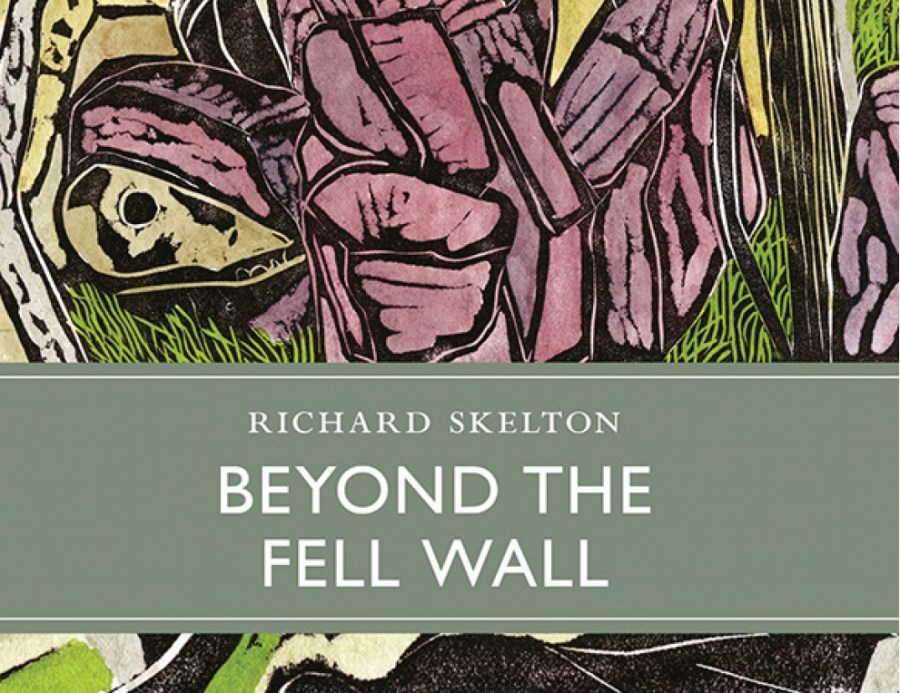The latest in Little Toller’s series of monographs, this unusual book by Richard Skelton records the time he spent living in the landscape of South Cumbria.
Skelton is also a musician. His work – whether written or composed – frequently incorporates emotional responses to particularly important places, and on the pages of this beautifully put together little book, the writing has space to breathe, to be, and to be taken in at a slow pace. There are pencil drawings by illustrator Michael Kirkman and a beguiling lino-cut cover.
Two voices are at work here, the first that of the observer/narrator – Skelton himself, laying down words and ideas like stones used according to their shape and size and usefulness in the construction of a dry-stone wall.
The second voice is that of the watcher, someone or something that is older than us, and is possessed of the omniscient viewpoint of nature herself. This is a witness to life and death, to celebration and decay and ultimately to prophesy.
Skelton’s book arrives at a point in time when the idiosyncratic Cumbrian dialect is fading away. But among the stories he unearths, sometimes literally through his investigations of the ground underneath which he walks and the old walls he lives besides, Skelton brings it back to life. He creates (or rebuilds) vocabularies of rock: of wall-building terms, of field names – a litany in themselves – Otter Holes, Fox Burgh, Flood Acre, High Intake, Hunger Field, Cacklemackle.
A wall of namings snakes its way down one page; another makes its own enclosure of white space. It is this naming of things local that so entranced me as a child come to live in the same landscape. I wanted to be able to imbibe and possess this new language. Revisiting some of this through Skelton’s book has been a joy. I hear again the voices of my farmer friends John and Nan Todd of Wallenrigg Farm near Broughton and of the farmers in for a pint at Ulverston’s Sun Hotel on Market Day.
Among the stories are those that date back to the earliest of times, of myth making and of creatures hunted into extinction. At the heart of the book is the dry-stone wall seen from Skelton’s cottage, though it is also the idea of dry-stone walls, of walls built without mortar, held together by nothing more than precision building and that become homes to creatures, to birds, to lichens and “when the sun is at its lowest, just as it dips below the horizon, it sends out its golden substance to be caught in the wall’s net; welcomed within its deepest recesses, where it is cradled until dawn.”
There is another idea too, and one that though expressed in poetic form here, must now, more than ever, be given serious consideration. In recent months, rain fell on Cumbria as never before. Floods occurred where they had before in recent years, but also where they had never been. Arguments raged – who to blame? What to do? Where to turn? Build more flood defences down-river?
To proponents of re-wilding, the answer is clear – plant more trees in the uplands, in the ‘waste’ ground above the line of the intake wall. Let the wood burst out from its enclosure. Let land cleared centuries ago see the rebirth of trees in the uplands. Skelton’s closing paragraphs talk of humans being “deaf to nature’s music.” As upland tarns are books that contain knowledge of pollens from trees systematically removed centuries ago, let the birch, hazel, ash and oak come again. Let trees play their natural part in soaking up rainwater as it falls. Without this, all else is folly.
Like Skelton’s process of walking and thinking and writing, this is a book that deserves to be given time and to be re-read. Like the best of landscapes, it will linger in the mind and no doubt return unbidden, and when least expected.
Reviewed by Karen Lloyd
Book review: Beyond the Fell Wall by Richard Skelton








